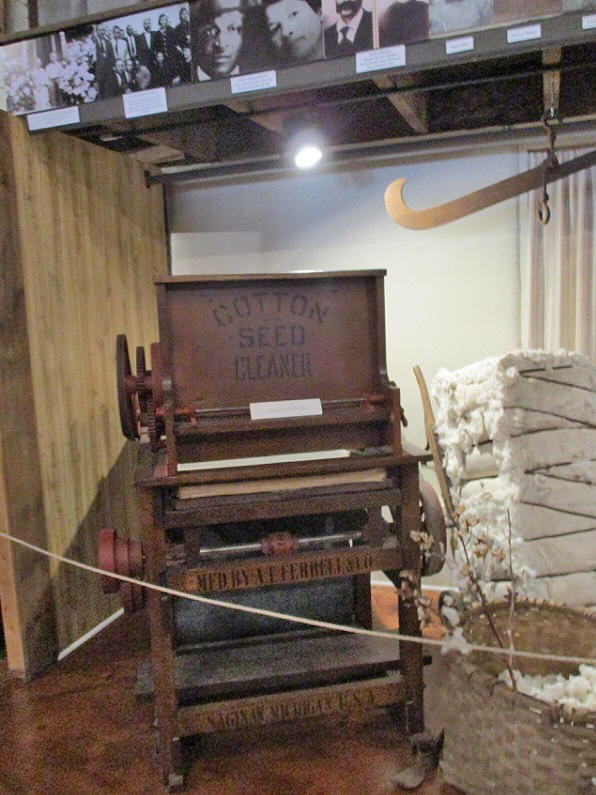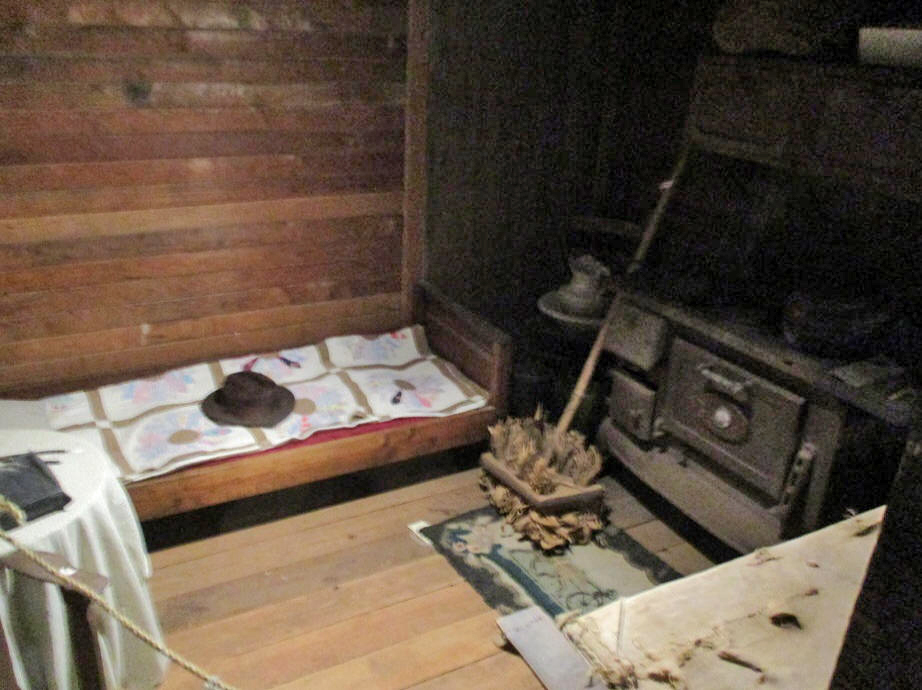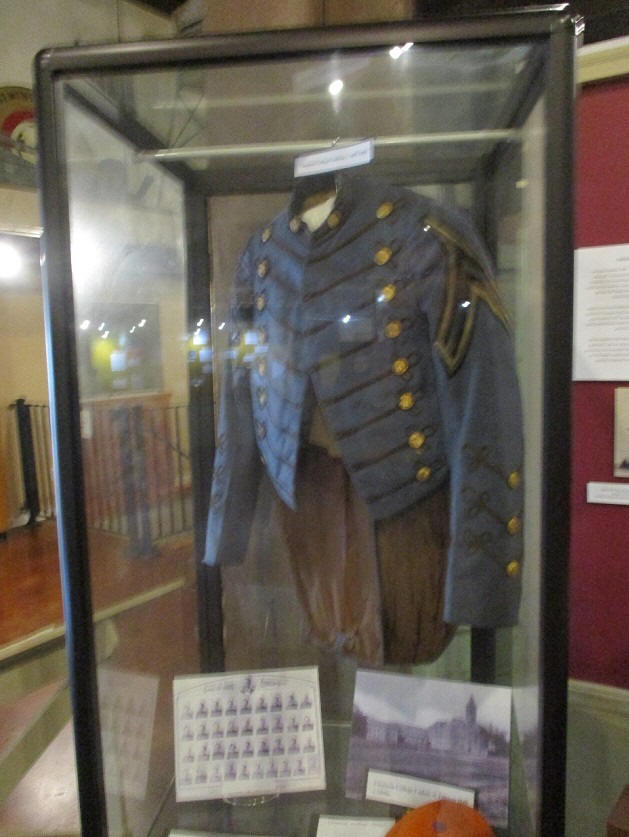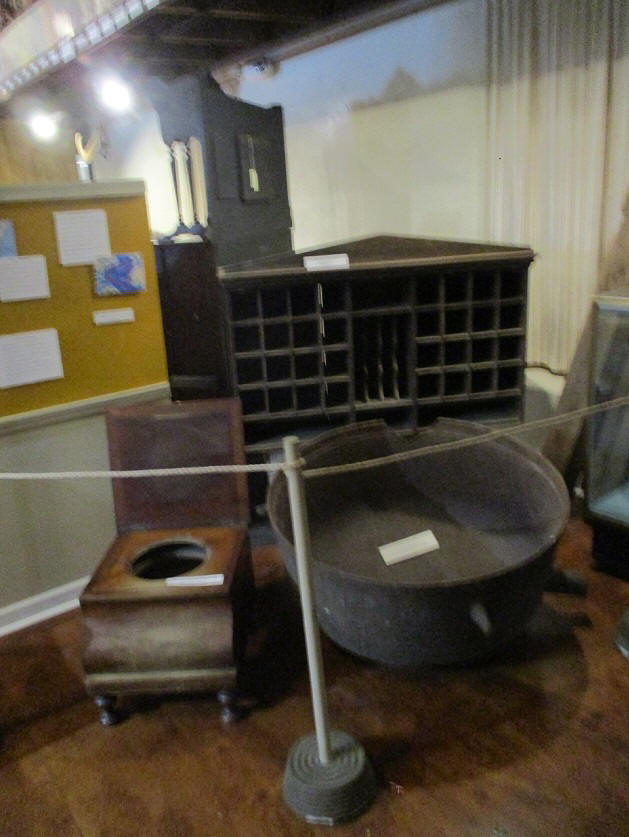Some History in South Carolina's Northeast Corner
Story and photos
by Tom Straka

A few South Carolina counties have a little bit of the Blue
Ridge Mountains, jutting against North Carolina. The extreme
northeastern one is Oconee County and that jut gives it an
excellent flavor of Appalachian culture. It is an
interesting county, bisected by the Cherokee Foothills
Scenic Highway (SC Highway 11), with the area north of the
highway being distinctively flavored. The Foothills Highway
is a panoramic way to get off Interstate 85 with light
traffic and connecting back to the interstate at both ends
of the state. There are numerous short excursions to sample
Oconee County; a couple have been noted in this story:
Oconee Station, part of the state's frontier history,
and a
road trip to an unfinished railroad tunnel near the
river used to film the Movie Deliverance. The
Oconee
History Museum offers additional insights into the
area's fascinating history. The museum has two locations,
the main museum and a general store museum nearby, plus
additional museums almost adjacent centered on Native
American and military history, together providing the
perfect places for a side trip off of the Foothills Highway.
History Museum
The Oconee History Museum is located
just off of Main Street in Walhalla, South Carolina in a
historic Tobacco Warehouse (c. 1892). It has both
Appalachian and Piedmont history, as the county includes
both regions. Early history includes Native Americans,
frontier exhibits, and even dugout canoes rescued from the
bottom of local rivers. Other detailed exhibits highlight
that unfinished railroad tunnel (which is only six miles
away for anyone interested in the real thing) and a
Depression-era tenant farmer's house. The museum is designed
to cover the
historic eras which shaped the county, from prehistory
(mainly Native American history), to pre-Civil War (like
John C. Calhoun and the railroad tunnel), to the Civil War
and Reconstruction, to modern eras (like dam construction
and a nuclear power plant).

Two remnant canoes, retrieved by
archaeologists from local river bottoms, are preserved in
the museum. One canoe dates to 1760, plus or minus 40 years.
It was over 30 feet long, nearly two feet wide, and just
over a foot in height. It is uncertain whether it was built
by Native Americans or white settlers. It was made of
southern yellow pine. The 30 foot boat is under
preservatives and a glass screen that does not allow good
photographs, so the shorter canoe is shown above.

Some of the simple things of earlier
life were very interesting. An early kitchen with appliances
and tools is interesting to compare to the modern version.

An
old-time icebox from a local hotel is probably something
most visitors have never seen. The ice was produced by
nature in winter and harvested from lakes and rivers,
preserved in insulated icehouses. A block of ice was held in
a tray or compartment at the top of the box. Cold air would
circulate down and around the compartments below. Melted
water would enter a tube which passed through the bottom of
the icebox to a pan underneath to catch the water.

Oconee County was cotton country and,
as you'd expect, there are cotton-related machines in the
museum, including a cotton gin. A cotton gin separated the
sticky seeds from the fibers in short-staple cotton, which
was easy to grow in the Deep South. This improved
efficiency, but cotton still needed to be picked by hand.

A Cotton Seed Cleaner. "King Cotton" is
well represented in the museum.
The Cotton Seed
Cleaner removed dirt and trash while continuing the drying
process. Crushed cotton seeds could be used for oil and meal
used in food products and in livestock and poultry feed.

Also, part of the cotton economy was
the automatic loom. This one is automatic bobbin changing
loom, making it unnecessary to stop the loom to change the
bobbin.

An older industry is represented by a
model of a corn mill, used to shell and grind corn into new
forms that are more digestible to both humans and animals.

An apple sorter represents an industry
that is still strong in Oconee County (in season, there are
nearby
apple orchards).

A tenant farmer's house is one of the
major exhibits (c. 1935). Tenant farming once supported
agriculture in the county. Unlike sharecroppers, who could
only contribute their labor, but had no legal claim to the
land or crops they farmed, tenant farmers frequently owned
plow animals, equipment, and supplies.

There is much military history in parts
of the museum, including maps and equipment, like musket
balls. Oconee County was once the frontier and had forts for
protection from the Native Americans.

Cabinets contains much written history,
like letters written by local Confederate soldiers during
the Civil War.

Of course, there is some Confederate
material in the museum, including an impressive Confederate
uniform.

Clemson University is close-by and
there is also a Clemson College dress uniform (C,
1893-1894).

An assortment of material from one of
the old hotels in town includes a chamber pot seat (to the
left).

There is a general store exhibit in the
main museum to supplement the separate general store museum.
This exhibit gives a broad picture of the general store,
while the separate general store museum highlights the great
variety of merchandise in a general store.

Furniture owned by historical figures
from the county is included, with related background
information.

A wooden telephone booth, once a high
class item, might surprise some of the younger visitors.

Modern Oconee County is included with
materials and displays from the Oconee Nuclear Plant. Duke
Energy's "World
of Energy" is close-by and offers tours to the public of
the nuclear plant.
Other Nearby Museums
The
Oconee History Museum's
General Store Museum is eight miles from the main museum
on Main Street in Westminster, South Carolina. It displays a
vast collection of historic artifacts from the original
England's General Merchandise Store, which was located
nearby. The idea of a general store was to carry everything
a customer might need, so the variety of goods in the museum
includes a lot of unusual things (like a "Flymo" hovering
lawnmower or Blue Horse notebook paper). In the late 1980s
England's General Store ceased operation and the owner used
the unsold inventory to develop a display of the contents of
a general store. It is like a trip through time, and for an
old-timer, a quiz on how items they can remember.

A broad view of the General Store,
showing the layout and huge variety of merchandise.

The breadth and range of merchandise
filling the shelves provides a trip back in time.
The immediate area near the Oconee
History Museum might be called "museum row." Two other
interesting, but smaller, museums are walking distances
away. The Museum of
the Cherokee in South Carolina "provides a preserve for
a deeper and more meaningful understanding of the Cherokee."
There were 27 Cherokee villages in the area that is now
Oconee County. "Aequonee" in Cherokee, pronounced by white
men as "Oconee," translates to "beside the water," referring
to the many rivers, creeks, and waterfalls in the region.
Native American artifacts are on display, providing an
insight into the Cherokee way of life and their culture.

There is a wide range of artifacts in
the museum. Some are elegant, like above, but full deer-skin
clothing is nearby.

Native American handywork and artwork,
like baskets, line the display cases.
The
Oconee
Military Museum is just across the street from the
Cherokee Museum. It is in a small building, but both floors
of the museum are filled with displays, from the
Revolutionary War to modern conflicts in the Middle East.
The walls are full of military artifacts, documents,
photographs, and artwork.

Rooms of the museum center on specific
wars, with uniforms, arms, military equipment, and ample
descriptions.

The Vietman display with equipment many
of the older visitors will recognize.
Public Disclosure
Please Read
FTC has a law
requiring web sites to let their readers know if any of the
stories are "sponsored" or compensated. We also are to
let readers know if any of our links are ads. Most are not.
They are just a way to direct you to more information
about the article where the link is placed. We have several ads
on our pages. They are clearly marked as ads. I think
readers are smart enough to know an ad when they see one but to
obey the letter of the law, I am putting this statement here to
make sure everyone understands. American Roads and Global
Highways may contain affiliate links or ads. Further, as their
bios show, most of the feature writers are professional travel
writers. As such we are frequently invited on press trips, also
called fam trips. On these trips most of our lodging, dining,
admissions fees and often plane fare are covered by the city or
firm hosting the trip. It is an opportunity to visit places we
might not otherwise be able to visit. However, no one tells us
what to write about those places. All opinions are 100% those
of the author of that feature column.



